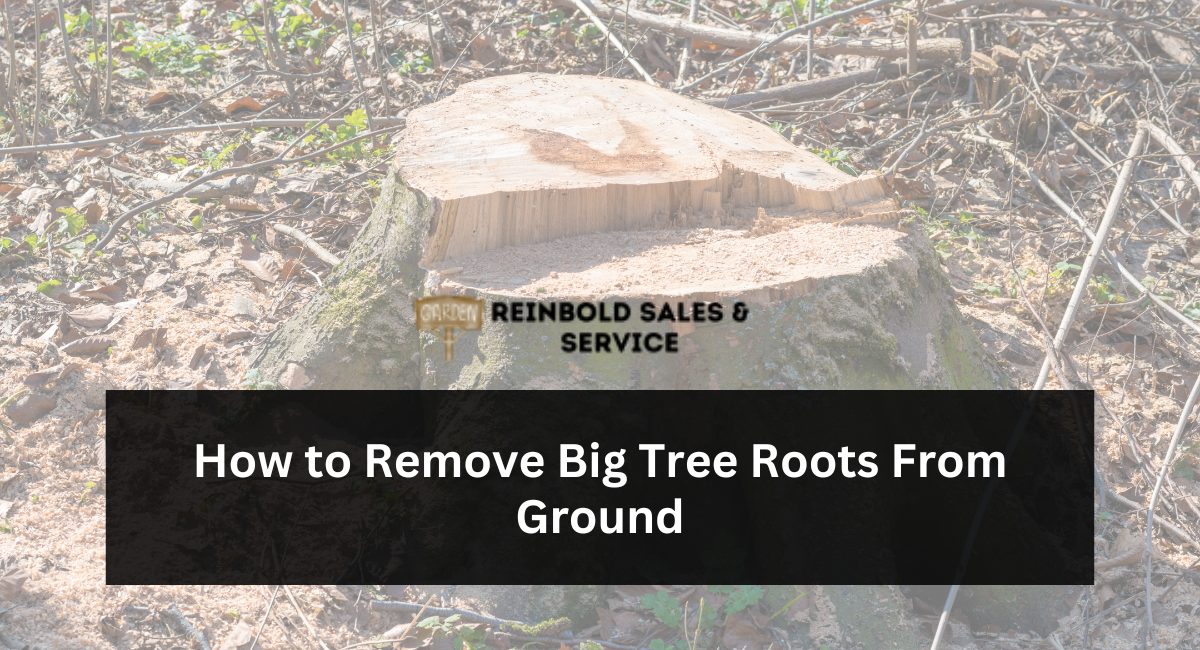Root removal can be time-consuming and complex, yet preserving your garden and preventing issues is necessary. Doing it properly will ensure minimal damage to the surrounding environment while protecting its integrity as much as possible.
Root removal techniques vary, including digging around the stump, uncovering its roots, and using gardening shears, chainsaws, or hatchet to cut them; rock salt or glyphosate herbicide can also help.
Use a Shovel to Expose the Roots
Tree roots often extend far beyond their canopy radius and may extend up to five times further than expected. Cutting exposed roots could harm or kill branches that depend on them for water supply, increase termite infestation risks in your home, and cause serious foundational damage.
To remove surface roots, identify those damaging your lawn, garden, or foundation. Next, dig up these roots using shovels, loppers, and possibly grubbing hoes; for safety, use 811 or your utility marking service to ensure no underground pipes, sewer lines, or drains are hit while digging. In addition to manual removal methods, you could also try chemical treatments or physical barriers (which obstruct root growth in certain directions, while bio barriers inhibit root tip cells while still allowing water through).
Cut the Roots With Loppers
Tree roots are vitally important, yet when out of control, they can become problematic. Cracked sidewalks or clogged sewer lines may result in unsightly roots taking over your yard or garden space. There are various solutions to help rid yourself of tree roots.
Digging is the most labor-intensive method for extracting roots and requires you to have tools such as a shovel, garden loppers, grubbing hoe, and root saw. Safety glasses and heavy boots should also be worn while calling 811 before beginning digging activities in any given area to mark underground utilities that could exist there.
Start by clearing away any dirt covering the roots. Next, trace each root to see where you can safely cut them; avoid cutting too close to the trunk as that could damage its roots.
Use a Saw to Cut the Roots
Tree roots may seem inconvenient, but they’re usually simply searching for essential nutrients and water resources. Some root systems may prove detrimental; in such instances, it is recommended that their removal be considered.
An often-held belief is that tree roots can break through concrete foundations; however, this is untrue. Although some root systems may damage homes’ foundations occasionally, this usually only happens with overgrown large and mature trees that have their root systems exposed by growing too rapidly.
Before cutting roots, be sure to call 811. This will enable you to identify underground utilities and avoid injury or property damage. Also, use a water hose to dampen the ground, followed by a shovel or trowel to loosen soil and uncover any surface roots.
Use an Axe to Cut the Roots
Sometimes, you want to save a tree in your yard, but its pesky roots crack your sidewalk or clog your sewer line. By installing a root barrier, however, you can eliminate these pesky roots without harming the tree itself.
As the first step, it is necessary to dig out the soil surrounding the roots using either a shovel or spade and expose as many roots as possible. Digging should occur circularly around the stump, with depth being dug on both sides of any larger roots.
Locate the appropriate spot to trim the roots. Aim to cut them approximately one-third of their diameter away from the trunk for optimal results. Marking this location beforehand will prevent unintended harm to the tree itself.
Use a Stump Grinder to Cut the Roots
People tend to envision tree roots as expansive arm-like filaments, reaching through concrete foundations and cracking them apart, leading to severe property damage. Although this scenario doesn’t always come true, it remains an alarming thought.
An effective method for clearing away stumps and their roots is using a stump grinder, a machine that cuts into the ground 6-8 inches deep to grind out stumps while cutting roots – making it much simpler to dig them out completely and dispose of them altogether.
Before using a stump grinder, contact 811 and have underground pipes marked to avoid damaging plumbing and sewer lines. Also, apply an herbicide treatment as soon as your stump is ground out for added safety.
Conclusion:
Removing big tree roots requires patience and precision. Safely employ the right tools, follow strategic cutting methods, and consider professional assistance for large-scale root removal. Ensure the tree’s health while enhancing your landscape.
